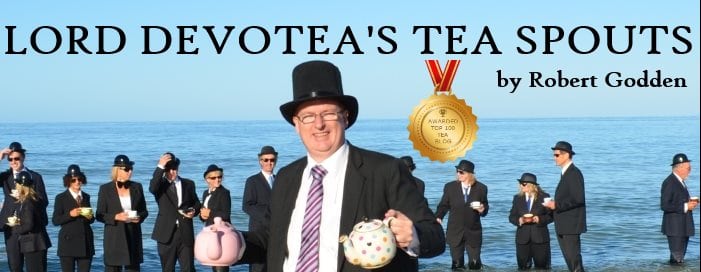Tea varies.
There’s no doubt that I’m reluctant to drink sweetened green tea with milk. But if I hailed from the region of Karakalpakstan in Uzbekistan, I probably would make it that way.
Rancid yak butter, tea, salt and water may make a delicious beverage if one is from Nepal, but I can’t say I’m keen to try it.
But closer to home, there are cultural divides within the tea community. There’s the “No Milk, Ever” brigade versus the “Milk Always” team. The “Sugar In Tea Is An Abomination And You Will Burn In Hell” syndicate versus that “I’ll have three, and make ’em generous” lot.
Generally, these groups can get along, but there’s one that I always find interesting here in Australia: the revulsion that some people feel for the concept of Iced Tea.
I CAN understand those people who feel revolted every time someone over 5 years old writes or says “Ice Tea” rather than “Iced Tea”, because it’s just plain ignorant and wrong. But I am fighting a losing bottle as ALL of the multinational conglomerates call their Ready To Drink products that, and I guess they are the new arbiters of the English Language.
When talking to people about Iced Tea, one of the common themes is for detractors to refer to it as “cold tea”, to suggest that it is tea that has gone cold, as opposed to a brew specifically made to be cold. I suspect that not just in Australia, but in Britain and New Zealand and a few other places this might be so.
We find at markets that kids are more than willing to order it. We serve it unsweetened, but with sugar syrup on the side that they can help themselves to. The syrup pours quite slowly and they tend to add about 2 teaspoons of 50/50 sugar syrup, so about 5 grams of sugar. The same sized cup full of cola would be around 35 grams of sugar.
Of course, keen twenty-somethings in full hipster mode drink it unsweetened over ice, but then hipsters always do stuff like that specifically to annoy me. I waited years to be old enough to wear cardigans, and the minute I was, all these young folk started to wear them and drink tea, making me look like I am just a Vespa and a brown shoulder bag away from a mid-life crisis of age-denial.
But there is a fair proportion of people we talk to that are revolted by the thought.
Sometimes we can sway them with a sample. Sometimes we can’t.
Thinking about it, I wonder if the problem in the USA is reversed. “I only drink hot tea when I’m sick” is something I’ve seen a bit from those quarters.
When we were sick as kids, my mother would dissolved a teaspoon of Vegemite in boiling water, add a teaspoon of margarine, pour it into a bowl over ripped up white bread and pronounce it “Vegemite Soup” as a sort of cure-all.* In that context, it’s hard to imagine willingly having that when one is not sick. Given that it’s closer to the Nepali Tea mentioned above than the way I normally drink tea, I am imagining that these Nepalis are virtually illness-proof.
So, I am left to ponder: what’s harder?
Selling hot tea to Americans? Selling iced tea to Aussies, Kiwis and Brits?
Or just the act of taking any person outside their tea comfort zone?
*I might admit to having made Vegemite Soup for myself at times. It’s actually delicious.

Iced tea: ‘a losing bottle.’
Well played, Sir.
@TheTeaRooms:Well played, indeed.
@TheDevotea: In my myopic ‘Merican viewpoint, I’ve never thought about what the rest of the tea drinking world thinks of iced tea. It’s always been second nature, here. The only way I liked black tea for quite some time was iced. (And that is, oddly enough, the only way I’ll drink Lipton.)
In the U.S., the iced versus hot debate is strictly seasonal. From May to September, iced tea rules. From late-October to whenever-the-f**k-winter-ends, it’s hot tea.
Then there’s the lazy lot that go strictly for RTDs because they’re quick and easy. But most of those really don’t count as tea.
Iced tea is not really something I tried before last summer and I did it with my own tea (and without sugar in it).
As for a debate, I am sure you will find a way to convince both sides that they must try your wonderful products.
I’ve always thought of you as a hipster.
That’s like, cool of you to say so.
Love your post! I think tea should be about consistency, but it’s the diversity that makes tea such an interesting drink. The same tea can taste different based on year, season and brewing method. That’s what I love soo much about tea, so yes I agree with your last statement, let’s get out of our tea comfort zone 😉